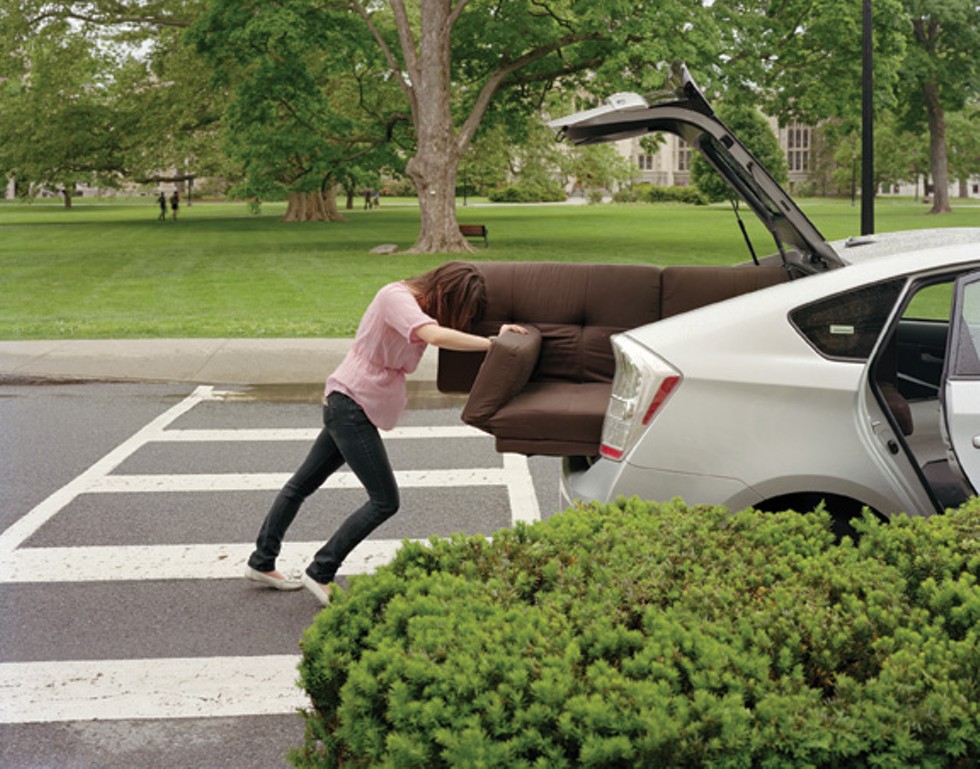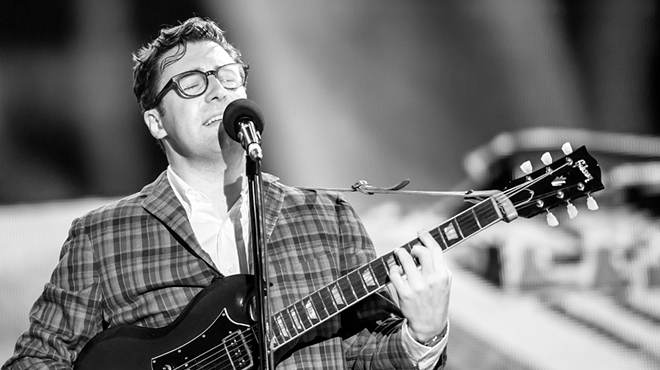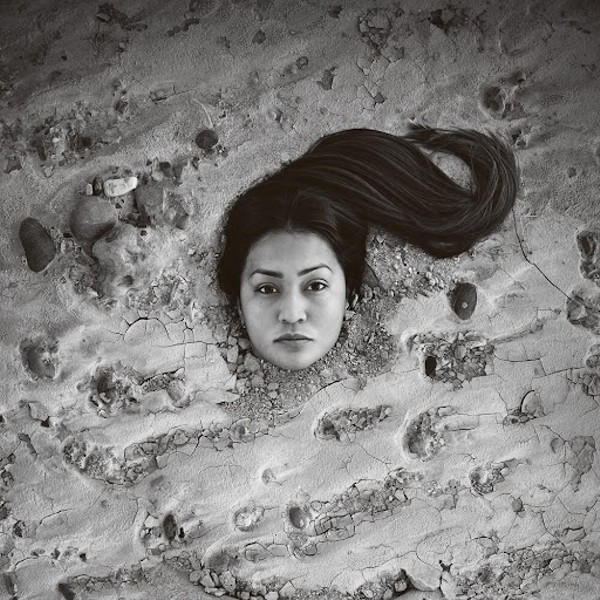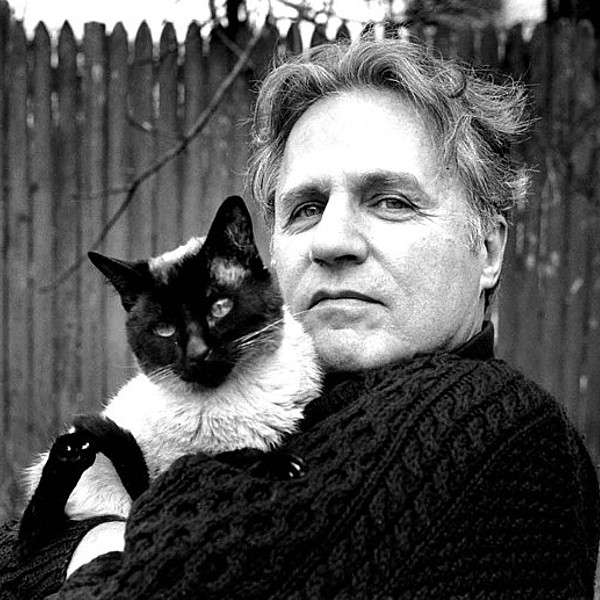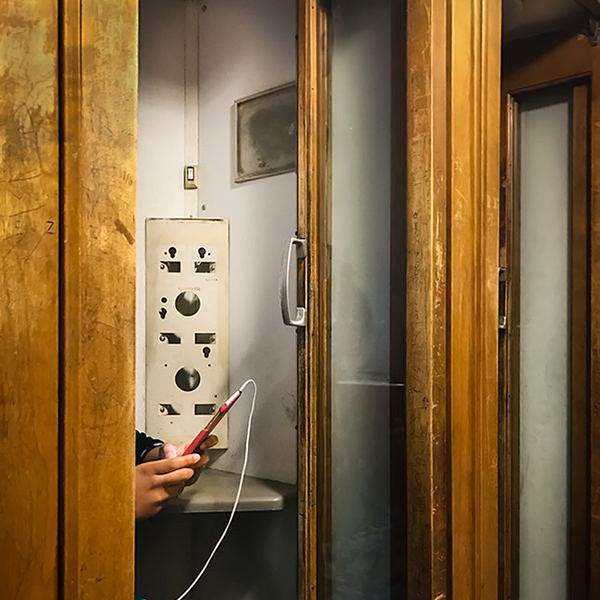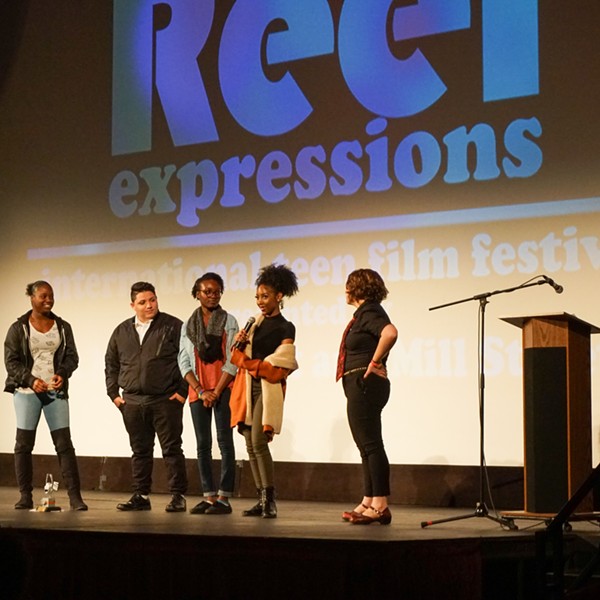Taking a serious glance inward for the occasion of its sesquicentennial (its 150th), Vassar College commissioned three photographers to come to campus and find their subjects and inspiration in situ. The 39 artworks that resulted peer into Vassar's privileged enclaves, taking stock of the décor, snack foods, ephemera, impedimenta, fashion gestures, tangential anxieties, and tangible attitudes that summon to mind a discrete characterization of this community of students. Currently on view at the Frances Lehman Loeb Art Center, this exhibition—"150 Years Later: New Photography by Tina Barney, Tim Davis, and Katherine Newbegin"—is reportage only in the very loosest sense, and noticeably bears no trace of the mix of poignancy and enchantment that yearbook and college promotional images rely on.
"I chose these photographers because I wanted to make sure that people could tell them apart," says curator Mary-Kay Lombino, "that they would know they were looking at three different artists, who were looking at the topic in three different ways." Tina Barney, Lombino learned, had been planning to take on an elite school as a subject. Barney is renowned for her portraits of Upper East Siders whose straight-on gazes search out empathetic complicity in the viewer. Barney's Only the Best shows four students who look like groggy arrivals from the LA indie scene in a dorm room. On the wall is a poster of Manet's Boy Blowing Bubbles. In her catalogue essay, Lombino points out that Barney's title is taken from the 1999 Manet show at the Metropolitan Museum, and she reminds us that Manet's bubble symbolizes the evanescence of youth. Still, the title Only the Best nods agreeably at entitlement, and in union with these fine young hipsters its nonironic gist is disquieting.
In 1939, Alfred Eisenstaedt, the pioneering photojournalist, did a Life photo essay on Vassar. Fewer attended college then, and far fewer women than men. College itself was fairly elite business, and for women the top was Vassar (which became co-ed in 1969). Even though an egalitarian point of view was implicit in Life's voyeuristic treatment of class and gender, Eisenstaedt's spread must have rankled many Depression-era readers. Yet others must have been thrilled by the proto-feminist world that Vassar suggested. Four of these pictures, now in the Art Center's collection, are on display in an adjoining gallery.
Historical narratives leach through the bricks and rafters in Katherine Newbegin's photographs; which notably, are without human beings. Newbegin's prior work includes an exploration of crumbling Soviet tourist lodging in Eastern Europe, and the settings that she chose at Vassar seem similarly lost in time. Vestiges of student life, such as the stored furniture and erotic graffiti in Basement of Joceyln, may intimate social relations from the past: "Did punk bands once practice here?" one asks.
Tim Davis, who is a professor at Bard College, chose "move-out day" for his series. The not-yet-packed or discarded objects he lands upon—e.g., Broken Mirror, Wig and Bong, The White Shelf—have the quality of luminous readymades. A sense pervades that the ceremonies of innocence that were once enacted within the college walls are also being packed or discarded. The couch on which one learned Russian verbs or organic chemistry reactions, for instance—one wonders on its fate in the next life.
"150 Years Later: New Photography by Tina Barney, Tim Davis, and Katherine Newbegin" will be on display through March 27 at the Frances Lehman Loeb Art Center at Vassar College in Poughkeepsie. (845)437-5632; http://fllac.vassar.edu.







